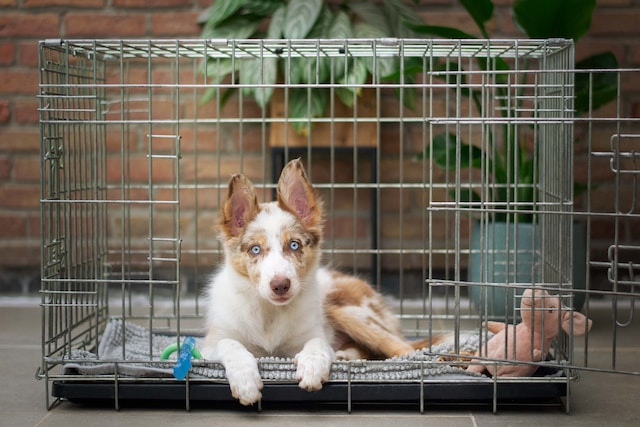Leaving a Puppy Alone for 8 Hours: Risks, Tips, and Solutions
Leaving a puppy alone for 8 hours is a significant concern for pet owners. Puppies need attention, care, and structure, and long absences can impact their well-being. By understanding the challenges and implementing the right strategies, you can minimize risks and ensure your pup thrives.
Why Puppies Struggle When Left Alone
Separation Anxiety
Puppies are highly social animals and thrive on companionship. Being left alone for extended periods can lead to separation anxiety, resulting in destructive behavior, excessive barking, or even depression.
Need for Frequent Potty Breaks
Puppies have small bladders and need to relieve themselves frequently. Leaving them for 8 hours can lead to accidents, stress, and difficulty with potty training.
Lack of Mental Stimulation
Without proper stimulation, puppies can become bored and engage in undesirable behaviors like chewing furniture or digging.
Is It Okay to Leave a Puppy Alone for 8 Hours?
Age and Developmental Stage Matters
The ability to stay alone varies with age. Young puppies (under 4 months) can typically only hold their bladder for 1-2 hours. Older puppies (6 months and above) may handle longer absences but still require enrichment and potty breaks.
Behavioral Impact of Long Absences
Extended isolation can lead to behavioral issues, including anxiety, destructive tendencies, and reduced social skills.
Signs Your Puppy is Struggling
Look for symptoms like excessive barking, loss of appetite, or soiling in inappropriate places. These may indicate that your puppy is not coping well.
Preparing Your Puppy for Extended Alone Time
Gradual Training for Loneliness
Start by leaving your puppy alone for short periods, gradually increasing the duration. Reward calm behavior to build positive associations with being alone.
Establishing a Routine
Puppies thrive on consistency. A structured schedule for feeding, play, and potty breaks helps them feel secure.
Using Comfort Items
Leave items like a blanket or toy that carry your scent. These can provide reassurance and reduce anxiety.
Essential Tools and Techniques
Crates and Playpens: Safe Spaces for Puppies
Crates can create a den-like environment where your puppy feels safe. Ensure it’s large enough for comfort but not too spacious, as puppies might use one corner as a toilet.
Interactive Toys for Mental Stimulation
Toys like KONGs or puzzle feeders keep puppies engaged, preventing boredom and reducing the likelihood of destructive behavior.
Cameras and Monitoring Systems
Pet cameras allow you to check on your puppy remotely, providing peace of mind and enabling timely intervention if needed.
Alternatives to Leaving Your Puppy Alone
Dog Walkers and Pet Sitters
Hiring a dog walker or sitter can break up the day for your puppy, ensuring they get potty breaks, playtime, and companionship.
Doggy Daycare Options
Daycare facilities provide socialization opportunities and professional care, making them an excellent choice for working owners.
Arranging Visits from Friends or Family
If professional services are unavailable, asking a trusted friend or family member to check in can be invaluable.
The Role of Potty Training
How Long Puppies Can Hold Their Bladder
A general rule is that puppies can hold their bladder for their age in months plus one hour. For instance, a 3-month-old puppy can hold it for about 4 hours.
Using Puppy Pads and Indoor Toilets
Training your puppy to use pads or a designated indoor toilet area can prevent accidents during long absences.
Managing Puppy Anxiety During Absences
Desensitizing Your Puppy to Being Alone
Practice leaving your puppy alone for short intervals, gradually extending the time. Always return calmly to avoid reinforcing frantic behavior.
Calming Aids and Techniques
Products like pheromone diffusers or anxiety wraps can help soothe an anxious puppy.
Reducing Loneliness Through Enrichment
Chew Toys and Puzzle Games
Engaging toys keep your puppy entertained and mentally stimulated, reducing the effects of loneliness.
Background Noise and Music for Puppies
Playing soft music or leaving the TV on can provide a sense of presence and reduce the puppy’s feeling of isolation.
How Long is Too Long?
Understanding Your Puppy’s Tolerance
Not all puppies can handle 8 hours alone. Observe their behavior and adjust your routine to meet their needs.
Balancing Work and Puppy Care
Flexible schedules, remote work, or pet care services can help balance your puppy’s needs with your commitments.
When to Seek Professional Help
Signs of Severe Separation Anxiety
Excessive howling, self-harm, or destructive behavior may require intervention from a trainer or veterinarian.
Behavioral Training Solutions
A professional trainer can help address underlying issues and teach your puppy to cope with solitude.
FAQs
How long can puppies safely be left alone?
Puppies under 4 months should not be left alone for more than 2-3 hours. Older puppies can handle longer periods with proper preparation.
What age can a puppy handle 8 hours alone?
Typically, puppies older than 6 months with proper training can manage 8 hours alone, though it’s not ideal.
Should I crate my puppy for 8 hours?
Crating for 8 hours is not recommended for young puppies. Consider alternatives like playpens or dog walkers.
What are signs my puppy is too lonely?
Excessive barking, whining, or destructive behaviors indicate loneliness.
How do I stop my puppy from crying when alone?
Gradual training, comforting items, and interactive toys can reduce crying.
Can I use technology to monitor my puppy?
Yes, pet cameras help you stay connected and intervene if needed.
Conclusion
Leaving a puppy alone for 8 hours requires thoughtful preparation and care. By training, providing enrichment, and exploring alternatives, you can ensure your puppy stays happy and secure even during your absence.






